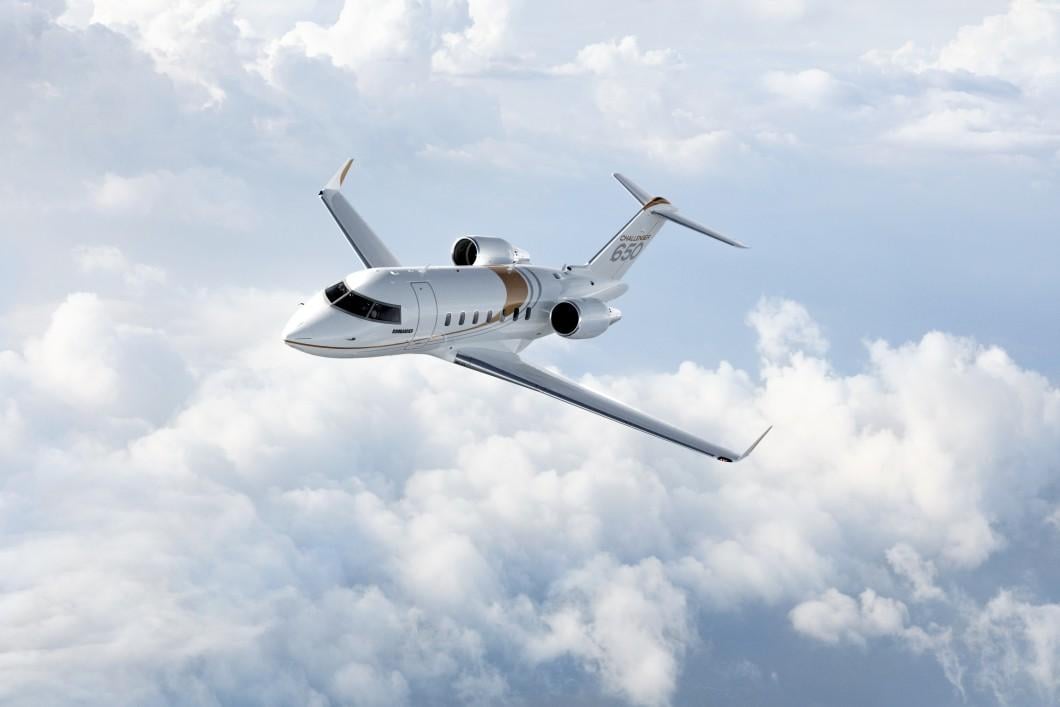
Volumes could be written about the ups and downs of Bombardier’s journey through the aviation business, but there is one straight line that runs through the story: the Challenger large-cabin business jet.
From the Challenger 601 that came on board when Bombardier acquired near-bankrupt Canadair in 1986, to today’s Challenger 650, the aircraft has been a steady seller, with its wide fuselage, solid performance and reliability, and reasonable costs. But the market is changing.
For most of its life, the Challenger has had only one real competitor, Dassault’s Falcon 2000, which has followed a similar path of offering an attractive mix of cabin, performance and price through several refreshes since it was introduced in 1994. But the competitive sands are shifting.
Unveiling the new G400 ahead of NBAA-BACE, Gulfstream President Mark Burns noted that "the large-cabin, entry-level point has long been kind of abandoned by most of the marketplace.” Abandoned, no. But deemphasized while manufacturers pursued the long-range, heavy-metal business jet market, perhaps.

That changes with the introduction of the G400, which offers the same Mach 0.90 speed and 51,000 ft. altitude capability as the long-range G500/G600, with the same cabin cross-section and altitude, and the same touch-screen, active-sidestick flight deck. The “only” differences are cabin length, range and price.
Look at how they stack up. The G400 offers a 91-in.-wide, 36.3-ft.-long cabin and flies 4,200 nm at Mach 0.85 and 51,000 ft. for a sticker price of $34.5 million. The Falcon 2000XLS has a 90-in.-wide, 26.2-ft.-long cabin and flies 4,000 nm at Mach 0.80 and 47,000 ft., all for around $34 million.
So how does the Challenger 650 compare? The aircraft still has the widest cabin in its class, at 95 in., although at 26.2 ft. long it is 10 ft. shorter than the G400’s. And the Challenger will fly 4,000 nm at Mach 0.80 but tops out at Mach 0.85 and 41,000 ft. It is a little cheaper, at around $32 million.
At its investor day in March, Bombardier presented a chart showing how its business jets line up against their competition. The Challenger 650 nicely filled the place in its range between the super-midsize Challenger 350 (now revamped as the 3500) and the smallest of its long-range aircraft, the Global 5500. Next to it was empty space in Gulfstream’s lineup between G280 and the G500.
Not only is that space no longer empty, but there is also now a G800 near the top of Gulfstream’s lineup with an 8,000-nm range that bests the 7,700 nm capability of Bombardier’s flagship Global 7500. Also closing in are Dassault’s 7,500-nm Falcon 10X with its cavernous 109-in. cabin and the 5,500-nm, 102-in. Falcon 6X.
Newly reminted as a pure-play business aircraft manufacturer, Bombardier clearly has a lot of thinking to do. But what it does not have is a lot of money. Coming out of a five-year turnaround that saw it exit regional and commercial aircraft as well as trains, the Canadian manufacturer is burdened with debt.
Bombardier’s priorities are to pay down its debt, cuts its costs, generate free cash flow, improve its margins and increase its revenues, in large part by building its aftermarket sales. Another refresh of the Challenger probably is not enough in this new market reality, but an all-new aircraft would be an expensive undertaking.
And new aircraft programs these days are platform plays. Gulfstream conceived the G400/G500/G600 and G700/G800 as two complementary families. Dassault is certain to have larger plans for its massive investment in the all-new Falcon 6X and 10X. No one develops an aircraft for a single niche anymore.
Any clean-sheet Challenger 650 replacement has to be at least a two-aircraft family. Dassault and Gulfstream have made certain it has to fly farther, faster and higher. And it has to have a bigger cabin - bigger even than today’s aircraft, which was unkindly dubbed “Fat Albert” in the early days of its design.
This would be no small undertaking and it will not happen soon. There is a little time, as the G400 will not enter service until 2025. But the clock is ticking. Bombardier redefined the long-range segment with the Global Express and super-midsize with the Challenger 300. Can it do it again with the large-cabin jet?
